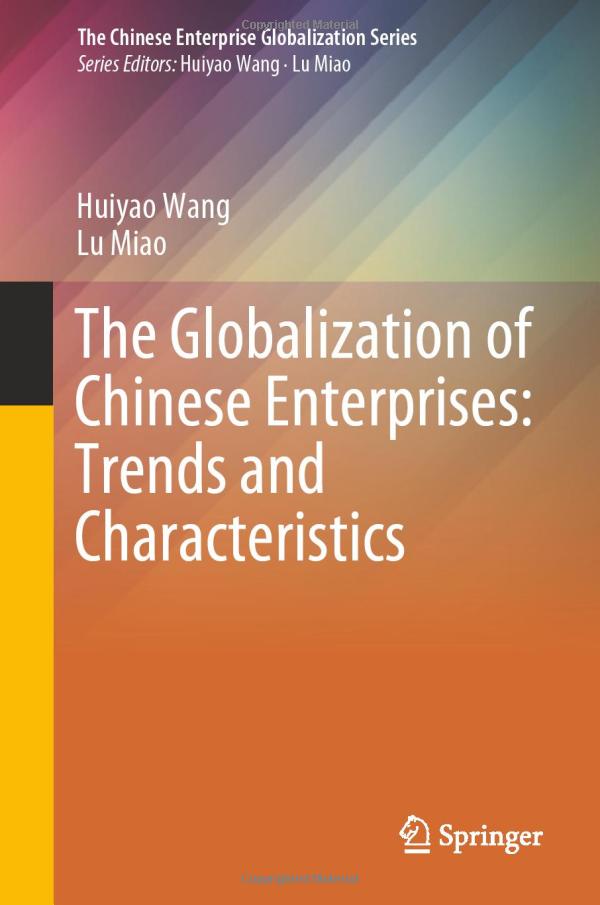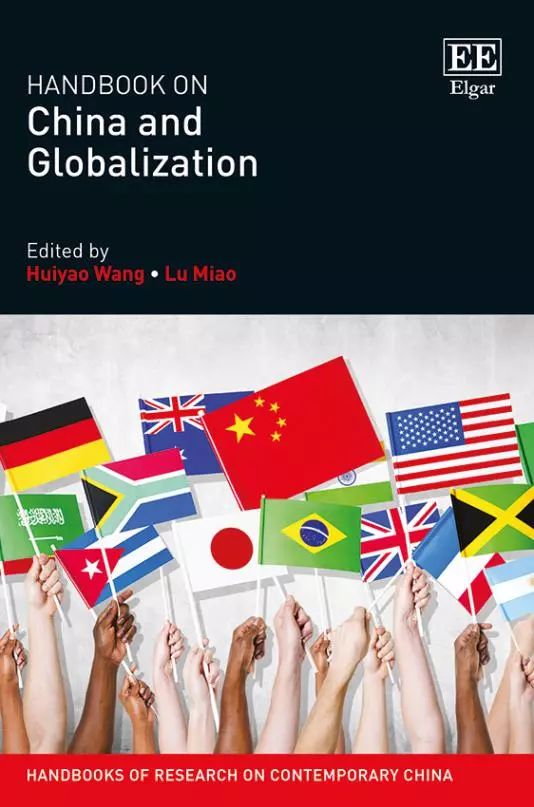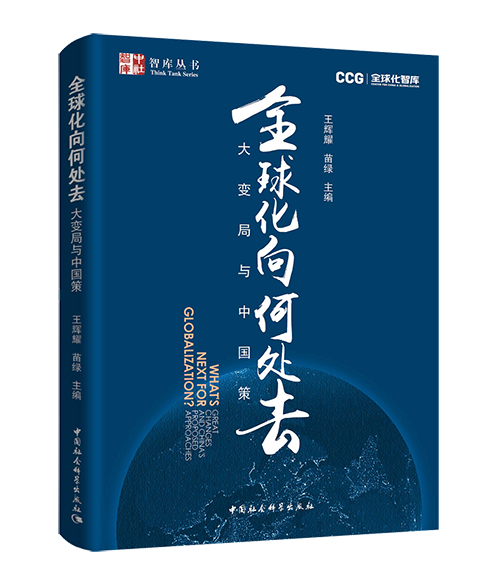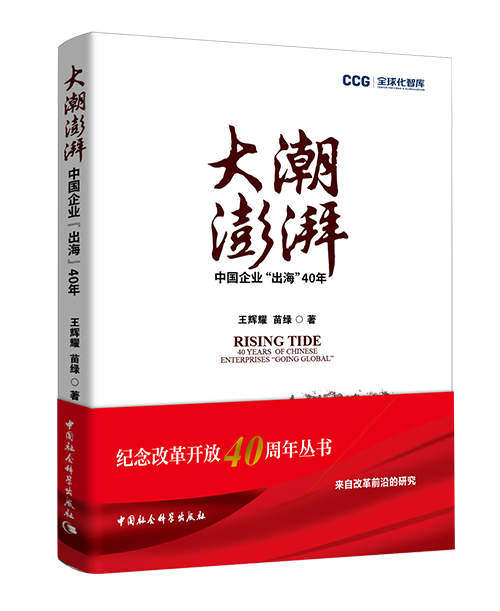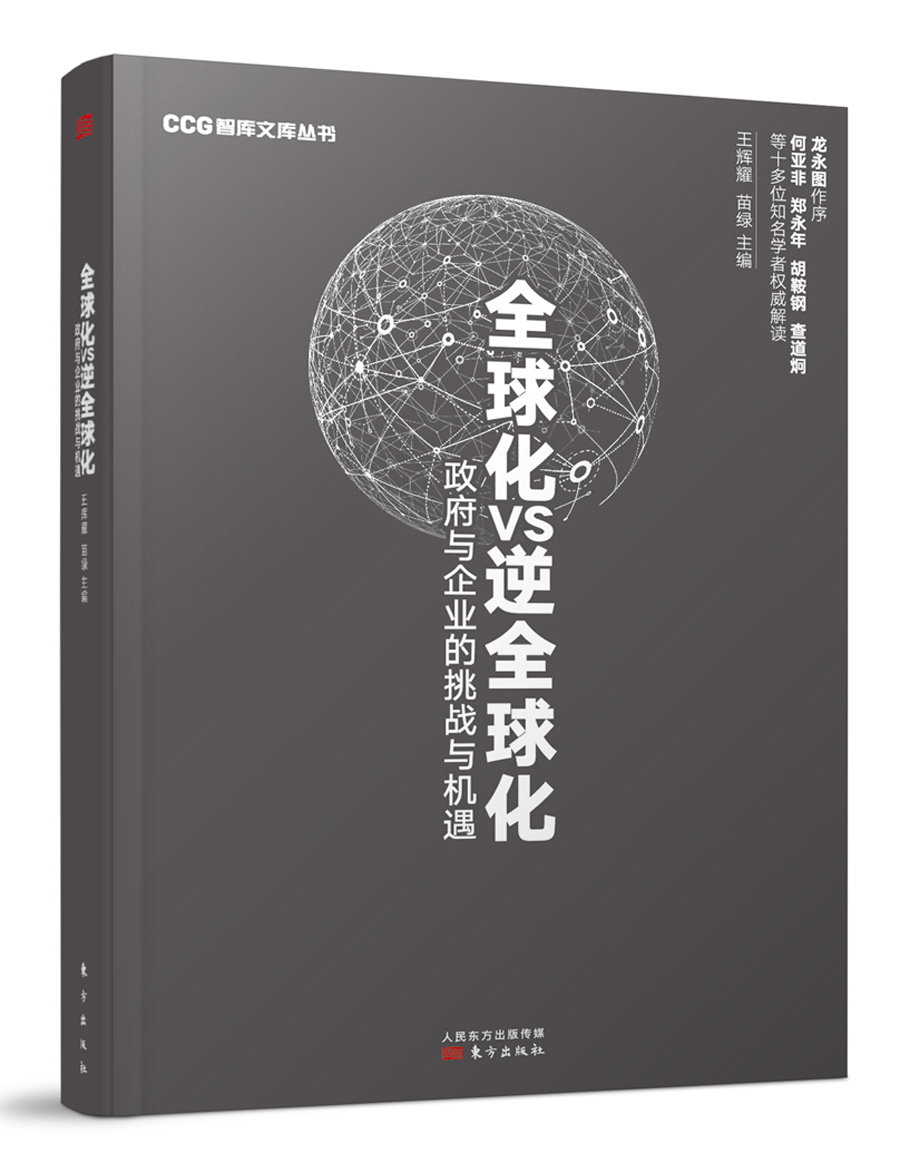全球化中的中国

出版机构:
作者:
发布时间:
点击封面查看大图
这本书探讨近年来出现的新的海归现象和海归企业家的作用和影响的评价,是关于中国在全球化进程中发挥何种作用的第一个主要的实证研究成果。本书认为民营企业已经成为中国全球化的驱动力,成为中国高新技术产业的领导者,如控制互联网、IT和媒体行业。研究表明,民企的竞争优势在于其策略的运用、团队合作、市场分析、社会关系、国际经验等。
Huiyao Wang Globalizing China: The influence, Strategies and Successes of Chinese
Returnee Entrepreneurs. Bingley: Emerald Group Publishing Limited, 2012. 204 pp. ISBN
978-1-78052-388-0, £ 59,95 (hbk)
Reviewed by: Yijun Xing, Beijing Jiao Tong University, China, and Yipeng Liu,
University of Kent, UK
This book investigates an emerging phenomenon about returnee entrepreneurship
(Cumming, Sapienza, Siegel, & Wright, 2009), with a focus on Chinese returnee
entrepreneurs. It deals with a broad range of issues associated with this phenomenon
addressing for instance, the returnee development trajectory, entrepreneurial strategies and
key success factors of this important type of entrepreneur. This is discussed in the context of
systematic research findings. As the Vice Chairman of Western Returned Scholars
Association and founding director of Centre for China and Globalization in Beijing, Dr. Wang
Huiyao shares his insightful findings, reflective thoughts, and life experience with a wide
range of audience who are interested in Chinese entrepreneurship. Given the important role
that context plays in entrepreneurship (Zahra & Wright, 2011) and the rising power of China
in the global economy, this book offers a special angle to understanding Chinese
entrepreneurs and their influences on China and the rest of the world. Being the change
agent with an increasingly important role in contemporary China, returnee entrepreneurs
and their entrepreneurial actions ought to have a significant impact on China and the rest of
the world.
This book consists of seven chapters. Chapter 1 provides a historical account of Chinese
returnees and their roles in China’s development. The most recent trend is an accelerated
number of Chinese returnees to the country propelled by the national talent strategy. One
highlight is the Thousand Talents Program launched in 2010 that mainly targets returnees.
Although returnees contribute to and shape China’s development directions across business,
academia, and even the public sector, returnee entrepreneurs are the focus of this book.
Chapter 2 lays out the theoretical background by reviewing literature from the domains of
talent flow, strategy, and entrepreneurship. In addition, the extant research on
contemporary returnee entrepreneurs has been thoroughly reviewed with specific reference
to emerging economies. A mixed-method research design was elaborated upon by
integrating a quantitative survey, in-depth case studies, archives, and participant
observations. Chapter 3 depicts the returnee entrepreneurs’ profile based on a survey
conducted in 2008 with a random sample of 146 returnees. The results reveal many
interesting aspects of Chinese returnees, including their motivations, personal qualities and
strategic factors for starting a business in China. In addition, the influence of these
entrepreneurs on industry and society are articulated. For instance, returnee entrepreneurs
make a significant contribution to the building process and growth of high tech industries
(Kenney, Breznitz, & Murphree, 2013). Several challenges encountered by returnee
entrepreneurs are also discussed, including political, social and even cultural challenges.
As the main findings, Chapter 4 illustrates the different entrepreneurial strategies deployed
by Chinese returnee entrepreneurs according to the Environment-Strategy-Performance
framework (Tan & Litsschert, 1994). Collectively, based on cross-case analysis of 30 cases,
the author identified three entrepreneurial strategy models, namely the market strategy
model, the technology strategy model, and the networking strategy model depending upon
the variations of market uncertainty. This chapter also contains in-depth analysis of five
successful Chinese returnee entrepreneurs and their ventures to examine winning
entrepreneurial strategies. The examination of internal as well as external environmental
factors provides a detailed account of the challenges and benefits of each entrepreneur’s
journey. Combining a quantitative survey and qualitative case studies, Chapter 6 offers a
summary of ten key success factors for Chinese returnee entrepreneurs, highlighting the role
of technology leadership, international network, overseas experience, teamwork and venture
capitalists in facilitating returnee entrepreneurs to succeed. Chapter 7 summarises Chinese
returnees’ impact in promoting indigenous innovation, bridging China and the world, and
assisting Chinese firms in the “China Goes Global” endeavour. Theoretical and managerial
implications for entrepreneurs and governments are discussed. The author warmly
encourages future research to explore the exciting Chinese returnee phenomenon.
Despite the authority of Dr. Wang Huiyao and his comprehensive analysis, several aspects
related to returnee entrepreneurs are not explored in this book. First, given the
transformational nature of institutions in emerging markets, entrepreneurs might be offered
the opportunity to shape institutional development (Bruton, Ahlstrom, & Li, 2010). An
institutional perspective might help to reveal the co-evolution of entrepreneurship and
institutions. Second, this book merely focuses on returnee entrepreneurs. The domestic
private entrepreneurs might adopt rather different strategies in building ventures, which in
turn affects institutional development (Nee & Opper, 2012). Moreover, a comparative
analysis of domestic and returnee entrepreneurs could potentially shed some new light on
Chinese entrepreneurship (Li, Zhang, Li, Zhou, & Zhang, 2012). Importantly, the interaction
of returnee entrepreneurs with local entrepreneurs and governments may offer microfoundational
understanding to entrepreneurial strategy and institutional change process
which awaits further scholarly investigation.
We would like to highly recommend this book to both academics and practitioners. The
detailed analysis and lively entrepreneurial stories provide a much needed picture for both
scholars and managers who are interested in Chinese entrepreneurship. China’s
entrepreneurship landscape is changing quickly and returnee entrepreneurs are
instrumental in shaping China’s future development across multiple sectors. The South
China Global Talent Institute, the newly founded think-tank in December 2012 under the
leadership of Dr. Wang Huiyao, will focus on Chinese returnees and talent issues further
strengthening interests from academic, business and public sectors. Dr. Wang and his team
will engage with the unfolding process of Chinese talent strategy development and generate
more interesting and revealing studies about Chinese returnee entrepreneurs in the future. It
is worth studying and understanding this important topic, because Chinese returnees are
shaping and will continuously shape modern China in the forthcoming years.
References
Bruton, G. D., Ahlstrom, D., & Li, H. L. 2010. Institutional theory and entrepreneurship:
Where are we now and where do we need to move in the future?
Entrepreneurship Theory and Practice, 34(3): 421-440.
Cumming, D., Sapienza, H. J., Siegel, D. S., & Wright, M. 2009. International
entrepreneurship: managerial and policy implications. Strategic
Entrepreneurship Journal, 3(4): 283-296.
Kenney, M., Breznitz, D., & Murphree, M. 2013. Coming back home after the sun rises:
Returnee entrepreneurs and growth of high tech industries. Research Policy, 42(2):
391-407.
Li, H., Zhang, Y., Li, Y., Zhou, L. A., & Zhang, W. 2012. Returnees Versus Locals: Who
Perform Better in China’s Technology Entrepreneurship? Strategic
Entrepreneurship Journal, 6(3): 257-272.
Nee, V., & Opper, S. 2012. Capitalism from Below: Markets and Institutional
Change in China. Cambridge, MA: Harvard University Press.
Tan, J., & Litsschert, R. J. 1994. Environment – strategy relationship and its performance
implications: An empirical study of the chinese electronics industry. Strategic
Management Journal, 15(1): 1-20.
Zahra, S. A., & Wright, M. 2011. Entrepreneurship’s next act. The Academy of
Management Perspectives, 25(4): 67-83.
